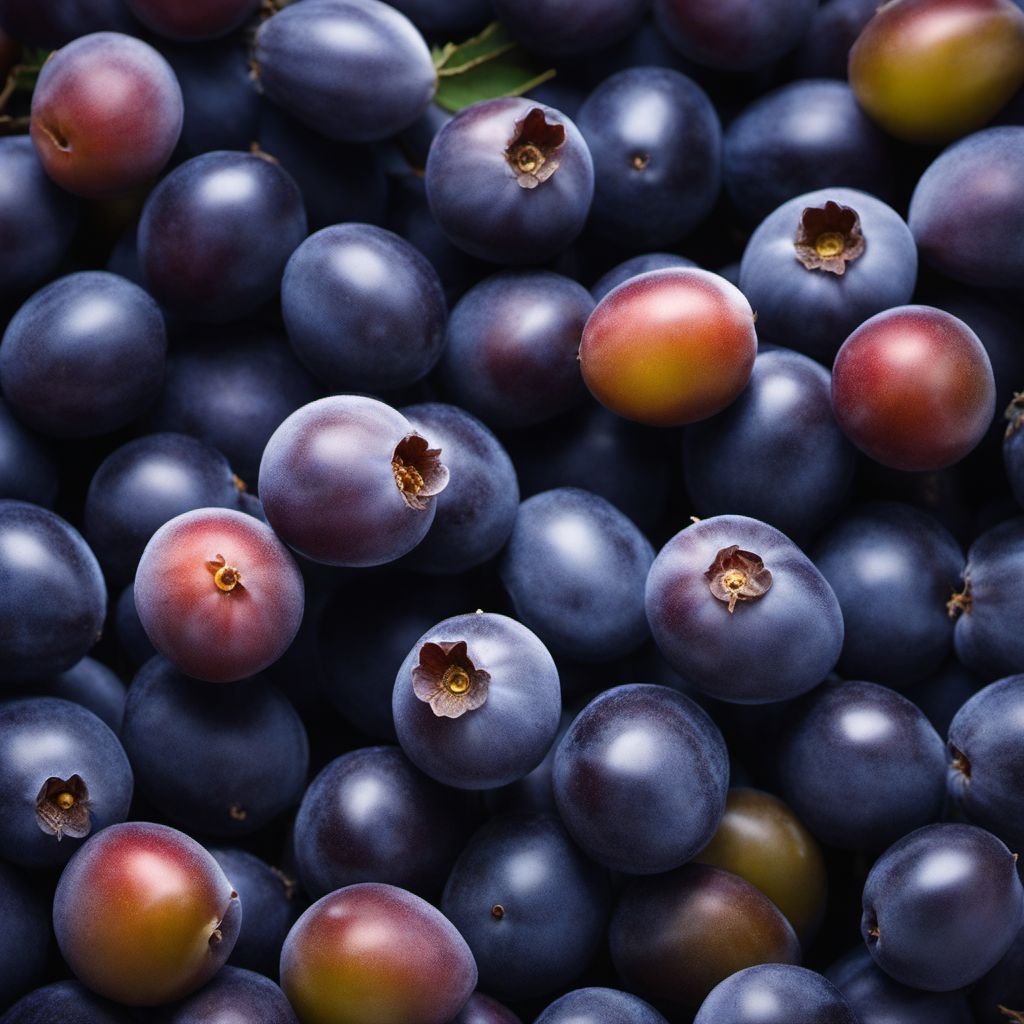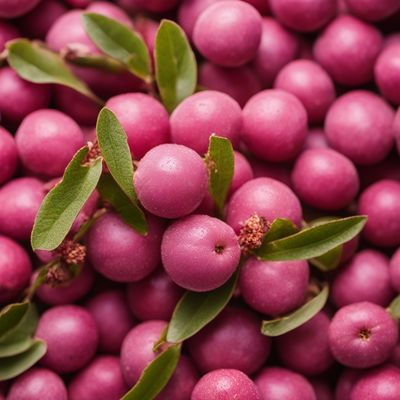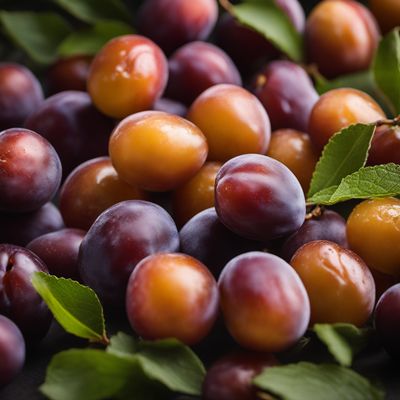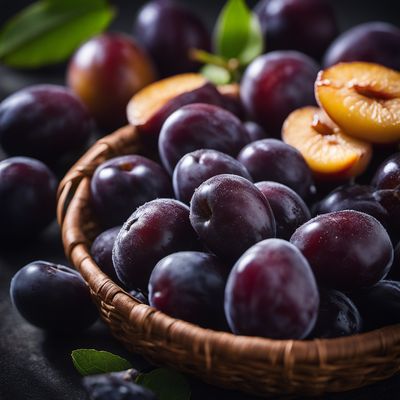
Ingredient
Damsons
The Prized Gems of the Plum Family
Damsons are small, round plums with a distinctive deep purple or blue-black skin. They have a tart and tangy flavor, with a slightly astringent taste that mellows when cooked. The flesh of a damson is firm and juicy, and the stone inside is clingstone, meaning it does not easily separate from the flesh.
Origins and history
Damsons are believed to have originated in the Middle East and were introduced to Europe by the Romans. They have a long history of cultivation and were highly prized in medieval Europe. Damsons were traditionally used for making jams, jellies, and preserves, as well as for flavoring liqueurs and wines. Today, they are less commonly found than other plum varieties but are still cherished by those who appreciate their unique flavor.
Nutritional information
Damsons are a good source of vitamins A and C, as well as dietary fiber. They are also rich in antioxidants, which help protect the body against oxidative stress and inflammation. Due to their tartness, they are often used in recipes that require added sugar or sweeteners.
How to select
When selecting damsons, look for fruits that are deep purple or blue-black in color, with a slight bloom on the skin. The skin should be smooth and free from blemishes or bruises. Gently press the fruit to ensure it is firm but not overly soft. Damsons are typically smaller than other plum varieties, so their size should be taken into consideration.
Storage recommendations
To keep damsons fresh, store them in a cool, dry place or in the refrigerator. They can be kept at room temperature for a few days, but they will last longer when refrigerated. If you have an abundance of damsons, they can be frozen for later use. Simply wash and dry the fruit, remove the stones, and place them in a freezer-safe container or bag.
How to produce
Damson trees can be grown in home gardens or orchards, provided they are in a suitable climate. They require full sun and well-drained soil. Damsons are self-fertile, meaning they do not require another tree for pollination. However, they do benefit from cross-pollination, which can result in a higher yield of fruit. Prune the trees in late winter or early spring to maintain their shape and promote healthy growth.
Preparation tips
Damsons can be used in a variety of culinary preparations. They are often used to make jams, jellies, and preserves due to their high pectin content. They can also be used in pies, tarts, crumbles, and other desserts. Damsons pair well with spices such as cinnamon, cloves, and star anise. They can also be used to infuse flavor into liqueurs, wines, or vinegars. Additionally, damsons can be dried and used as a snack or added to trail mixes.
Substitutions
Plums, greengages
Culinary uses
Damsons are commonly used in jams, jellies, preserves, pies, tarts, and desserts. They are particularly popular in British cuisine, where they are used to make damson jam, damson gin, and damson pies. Damsons can also be found in traditional German and Eastern European recipes, such as damson dumplings and damson schnapps.
Availability
Damsons are primarily cultivated in Europe, particularly in the United Kingdom, Germany, and Eastern European countries. They are less commonly found in other parts of the world, but can sometimes be found in specialty markets or gourmet stores.
More ingredients from this category » Browse all

Klamath plums
The Jewel of Klamath

Cherry plums
The Sweet and Tangy Delight: Exploring the World of Cherry Plums

Japanese plums
The Delicate Delights of Ume: Unveiling the World of Japanese Plums

Chickasaw plums
The Sweet Gems of the South

Gages
The Sweet and Succulent Delight: Exploring the World of Gages

Mirabelles
The Golden Gems of Summer

Sloes
The Bitter-Sweet Berry

Beach plums
The Hidden Gems of the Shoreline: Exploring the Delights of Beach Plums

Plumcots
The Perfect Blend: Exploring the Unique Delights of Plumcots

Prunus Nadia®
The Exquisite Fusion of Sweetness and Tartness: Prunus Nadia®

Plums
The Juicy Gems

Chinese jujubes
The Ancient Fruit: Chinese Jujubes